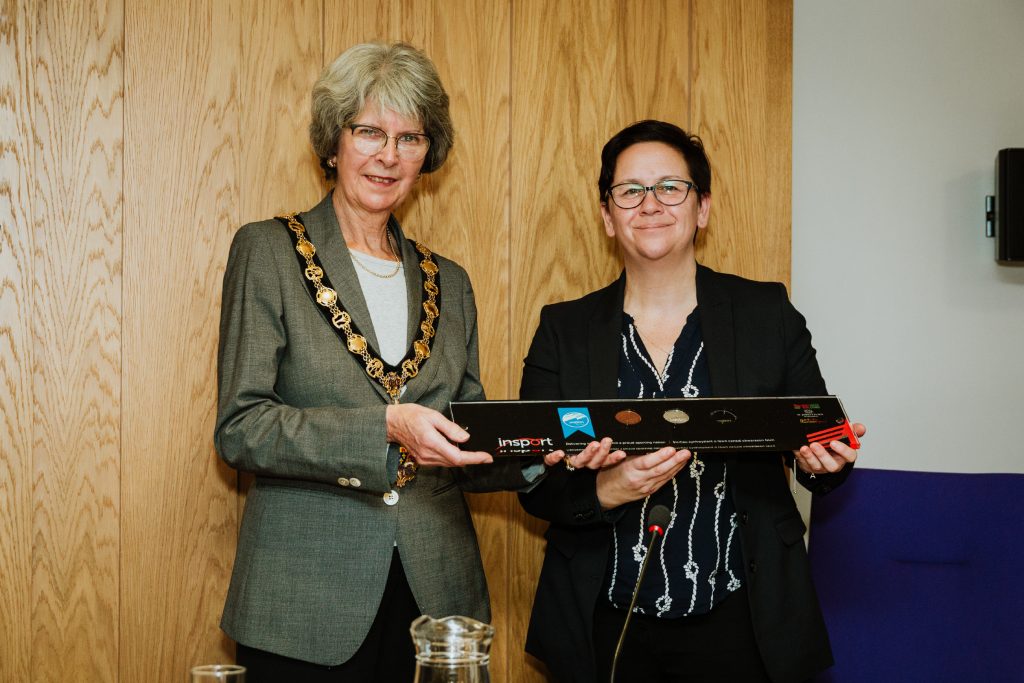Ash Dieback At Old Station Tintern
Old Station Tintern is currently undertaking some important work to help ensure we protect our special environment for our future generations to enjoy
What’s going on?
Much of our mixed woodland is made up of what is known as Fraxinus excelsio, or as we more commonly call them…..ash trees.
Recently we have noticed that a lot of our trees have succumbed to what is known as ash die back, an aggressive tree disease that is spreading quickly throughout Europe and the UK.
So what does ash die back look like and what is the problem with it?
Trees with ash die back are quite easy to spot. Some of the tell tale signs are a thinning out or dying-back of the branches at the top of the tree.
Once ash trees have reached this stage, unfortunately they cannot be saved, and as they deteriorate, there is a high likelihood that the tree will collapse.
This would be a huge risk to us as members of the public so we need to make sure we can keep our lovely site open by keeping it safe and enjoyable for all.
What are we doing about controlling ash die-back?
We are currently in the process of a removal and replanting programme. All the affected trees are in the process of being replaced by replanting two trees for every one that has died.
The new trees we are planting are of a mixed variety native to the UK which will positively benefit our local environment, help towards countering climate change and contribute to biodiversity in our local habitats.
By managing this problem we are not only preventing the spread of the disease to other areas, but we are also countering climate change and making our Old Station safe for everyone to enjoy now and in the future.
Ash dieback, also known as Chalara dieback of ash, is a fungal disease that affects all species of ash trees (Fraxinus). The disease has spread west across the country and is now affecting almost all parts of Wales.
The fungus (Hymenoscyphus fraxineus) attaches itself to the leaves of ash trees and spreads through to the branches. Ash dieback is a Europe-wide problem and 90% of ash trees are expected to die from it.
Some rural councils in England think as many as 500,000 ash trees on their land have been affected by ash dieback. In Monnmouthshire, to manage the risk from trees infected by Ash Die Back we are starting a programme of ash tree inspection and felling to achieve this that will take a number of years to complete. But by acting now we’ll be able to protect people and property from a disease that can’t be ignored.
How are ash trees affected by the disease?
The disease affects ash trees by blocking the water transport systems, causing leaf loss, lesions in the wood and on the bark. This leads to the dieback of the crown of the tree.
Trees affected become brittle over time and branches can break away from the main body of the tree. Trees affected can also be prone to secondary infection increasing the likelihood of them falling. If they are not dealt with, trees are at risk of collapsing, presenting an immediate danger to the surrounding area.
How we are tackling ash dieback
There is no known cure or practical way to prevent the disease from spreading. It is estimated that around 90% of ash trees in the UK will be killed by ash dieback.
There are thousands of ash trees on public land and many more on private land throughout the country.
We will only be dealing with trees on Authority owned public land – parks, housing estates, schools, on roadsides etc.
Surveys are ongoing to identify ash trees that require urgent felling. The surveys will take many months to complete and then we will be regular re- until the disease has run its course.
Over the next few years, ash trees on public land will be assessed to establish how the disease has affected them to help us improve our response to the disease
Ash trees are very important for their ecological value. Ash trees that show good levels of resistance to the disease should not be considered for removal as they as they may help repopulate the species in the future.
What happens if you don’t do this?
There will be several thousand large dangerous trees standing and potentially falling close to roads, schools, properties and public spaces.
How quickly does it spread from tree to tree?
The disease is caused by airborne fungal spores and can easily spread more than 20km per year. The spread from tree to tree depends more on the natural resistance of the particular tree as the spores are released in the billions and are literally everywhere.
How long will it take to deal with affected trees?
We don’t yet know how many trees will be badly affected or when they will become affected and how long it will take for trees that become affected to become a danger and require work. Evidence shows that trees decline by 10 to 20 percent each year depending on several environmental factors. Our monitoring programme will help us get a better understanding of the problem .
Is the council using this an excuse to get rid of more trees?
No, the council have committed to increasing the number of trees on public land as part of the response to climate change. This disease is highly regrettable and a disaster for the natural environment. The loss of so many trees and the ecosystems they support cannot be underestimated.
Are you going to cut down other species of trees?
Not due to ash dieback. The County Council will only remove trees if they have been assessed as unsafe to leave standing, are damaging built infrastructure or causing a hazard to the highway and there are no other practical solutions. Trees may also be removed certain special circumstances for example, to manage succession in planned landscapes.
Are you cutting down ash trees that don’t need cutting down?
Definitely not. We want to retain ash trees to see if any recover from the disease as these will provide an important seed resource for re planting Ash trees. All trees felled will be assessed prior to any work and retained for as long as safety permits.
Are some ash trees going to be resistant to the disease and how will we protect them?
There are some ash trees that appear to be resistant or highly resistant to the disease. These trees are incredibly important for the ecological value they retain in the landscape. We will continue to monitor the decline or resistance of all the retained trees over a number of years. All trees showing good resistance will be noted and departmental owners of those trees will be notified.
Are you going to replace what is lost?
We will replant trees where possible and the Council has a commitment to a new tree planting target as part of its Climate Emergency Strategy
What happens to all the wood?
Wood from tree work usually goes to contractors for processing into firewood. Some of the chipped wood goes for biomass where it is economical to do so.





